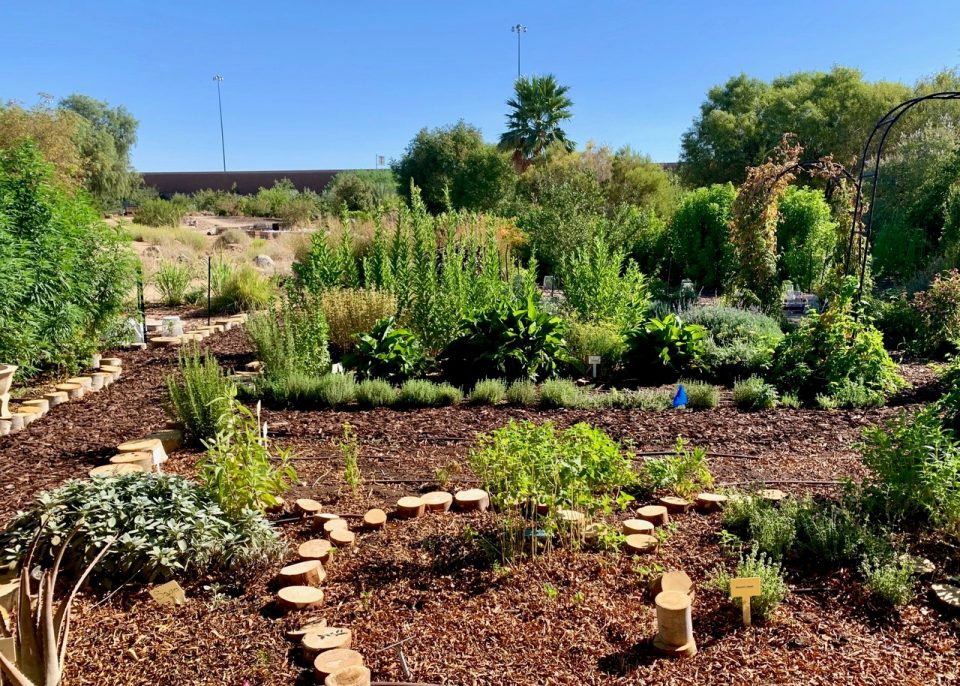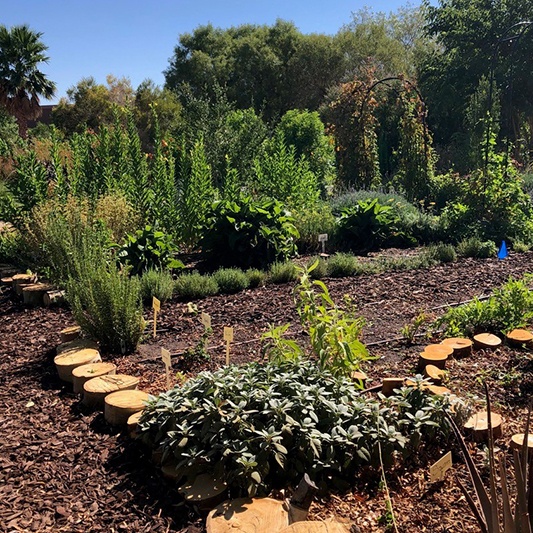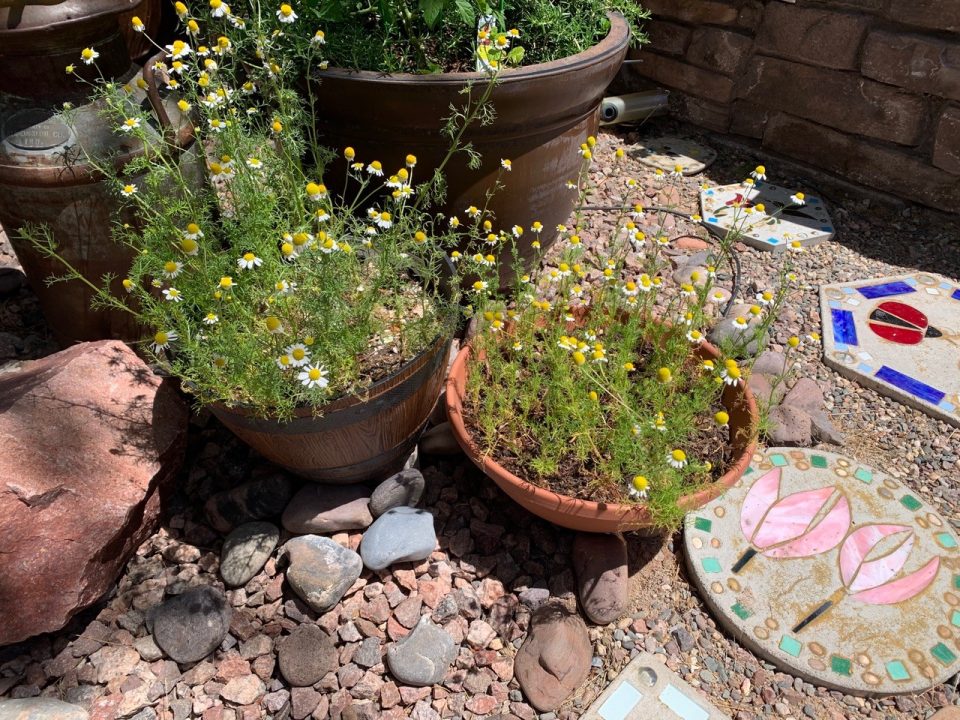Part of the joy of growing herbs is that they smell so wonderful. Herbs are easy to grow in the desert and most are heat tolerant. If you want proof of that, come visit the Clark County Extension Botanical Gardens. Master Gardeners will be happy to take you on a guided tour and show you around. It’s the best kept secret in town. We want to change that, so bring friends!

While herbs are a wonderful asset to any garden, the true value of these plants comes from using them. And there are so many options for doing that. The first thought for most of us is to eat them.
Let’s use fennel as an example. Would you say fennel is a vegetable, herb or spice? Ever eaten the bulb of a fennel with onion sliced thin and sautéed in extra virgin olive oil? Yum! Would you call that a vegetable dish? I would.
To finish off the dish, you might chop some of the frilly fennel fronds (say that fast 5 times) and sprinkle them on top for color, texture and flavor. Those delicate fronds seem like herbs, don’t they? They are. They make a great addition to salads, too.
And if you let the flowers go to seed, you can eat the delicious licorice flavored seeds right off the plant … or use it as a spice. So you were right, fennel is a vegetable, an herb AND a spice!
It is also a darn good looking plant in your garden. As an added bonus, fennel happens to be a habitat plant for swallowtail butterflies. This plant can grow enormously tall so give it plenty of room to spread out. If you let it go to seed, you will likely find baby fennel plants in places you might least expect. Fennel will grow in the suns direction (yep, even in Las Vegas) and will also grow in part shade. Just cut it back in the winter for a spring surprise.
It’s spring, so you are probably looking for some color to add to your garden. Do not forget that herbs can provide gorgeous color! Have you ever grown Monarda? When this plant blooms, it is an absolute show stopper!
Monarda is in the mint family so prepare for the spread. You might know it as bee balm, bergamot or even oswego tea (a favorite of the Oswego tribe and adopted by American colonists during their boycott of British tea.) The flowers range in color – purple, pink, lavender, red and more.
Another favorite is echinacea, otherwise known as coneflower. They are drought tolerant and will provide pretty color and texture to your garden from summer to fall. Birds love the seeds, so I leave the flower heads on the plant during early winter. Echinacea purpurea (it is purple-ish) is the most common type and it comes back year after year! There are other varieties and colors at Star, too. Gotta love this perennial! It likes full sun.
Be sure to do a search for the uses of echinacea. If you are not already familiar, you will be blown away by the benefits of this plant. I can talk to you about growing the plants but not about their uses as medicine. So that research must be on you!
Don’t forget chamomile! It’s tiny daisy-like flowers are so pretty in combination with big, bold flowers. Roman chamomile is a perennial that grows back from the root. German chamomile is an annual but it self-sows and if you plant it one time, you will probably find babies popping up out of nowhere. Last year babies showed up between my pink rocks in the backyard! I transplanted them into pots and they were fabulous! Chamomile makes the best tea … ever! And it is great in combination with other herbs. It was happy in a container.
One of my favorite things about spring is making short trips to Star to see what herbs just came off the trucks. So, I’ll see you there!
Master Gardener Glenda
University of Nevada Extension
For more gardening information call the University of Nevada Extension Master Gardener help line at:
702-257-5556



